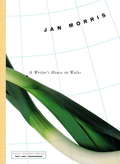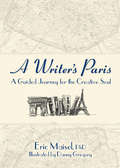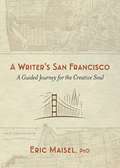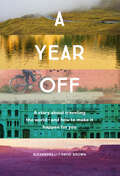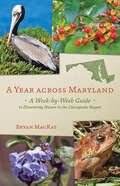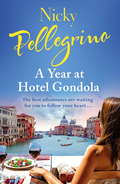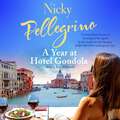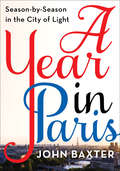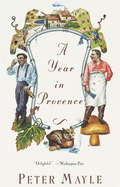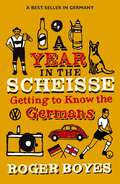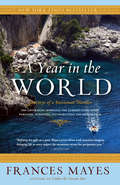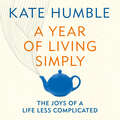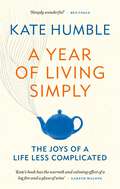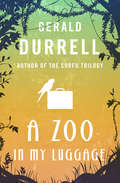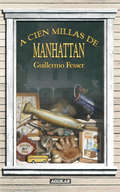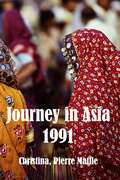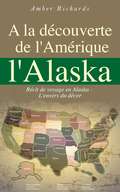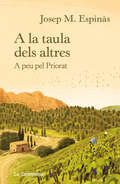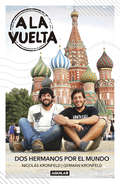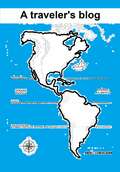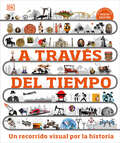- Table View
- List View
A Writer's House in Wales
by Jan MorrisThrough an exploration of her country home in Wales, acclaimed travel writer Jan Morris discovers the heart of her fascinating country and what it means to be Welsh. Trefan Morys, Morris's home between the sea and mountains of the remote northwest corner of Wales, is the 18th-century stable block of her former family house nearby. Surrounding it are the fields and outbuildings, the mud, sheep, and cattle of a working Welsh farm. She regards this modest building not only as a reflection of herself and her life, but also as epitomizing the small and complex country of Wales, which has defied the world for centuries to preserve its own identity. Morris brilliantly meditates on the beams and stone walls of the house, its jumbled contents, its sounds and smells, its memories and inhabitants, and finally discovers the profoundest meanings of Welshness.
A Writer's House in Wales
by Jan MorrisTrefan Morys, Morris's home between the sea and mountains of the remote northwest corner of Wales, is the 18th-century stable block of her former family house nearby. Surrounding it are the fields and outbuildings, the mud, sheep, and cattle of a working Welsh farm. She regards this modest building not only as a reflection of herself and her life, but also as epitomizing the small and complex country of Wales, which has defied the world for centuries to preserve its own identity. Morris brilliantly meditates on the beams and stone walls of the house, its jumbled contents, its sounds and smells, its memories and inhabitants, and finally discovers the profoundest meanings of Welshness.
A Writer's Paris: A Guided Journey for the Creative Soul
by Eric MaiselEnrich your life and write with more intensity than ever on a spirit-renewing adventure in the City of Light. Experience Paris not as a tourist but as a creator, where you dedicate yourself to the bohemian life in picturesque parks, cafés, and bookstores. In this guided tour of a beloved destination that has sparked the imagination of countless writers and artists, leading creativity coach Eric Maisel offers insights on how to use the city to spur commitment to your craft. Beyond the metaphor of Paris as a place of creativity, Maisel provides practical tools for you to use upon committing to this journey: tips for writing at the Place des Vosges while soaking in the surrounding architecture and vibrant energy; advice on the best time to visit the Musée d'Orsay for maximum inspiration; and ideas for engaging all the senses during strolls through churches and subways of this dazzling location. In brief essays that are whimsically illustrated, Maisel helps you put your dreams into action, encouraging you to move beyond the idea of living and writing in Paris to the reality of doing it, for three weeks or three years or anytime in between.
A Writer's San Francisco: A Guided Journey for the Creative Soul (Creativity And Journaling Ser.)
by Eric Maisel"Maisel has a wonderful voice and A Writer's San Francisco reads like a gritty, fluent love letter. He moves seamlessly between thoughtful descriptions of modern San Francisco and the San Francisco of the '60s and '70s in narratives that bring the city alive on the page. His affection and respect for the city are inspiring to all writers and artists, but also to anyone who has ever spent time in San Francisco and fallen in love with her." — Chris DeLorenzo, Laguna Writers Workshop San Francisco holds a special place in the history of American literature and in the hearts of creative people everywhere. In thirty-one essays, Eric Maisel takes you on an enchanted journey through one of the world's greatest cities. Walk San Francisco's twisting streets, climb its famous hills, explore bohemian landmarks like City Lights Bookstore, and check out lesser-known neighborhoods. Along the way, Maisel conjures the city's past and present writers, including Twain, Ferlinghetti, and Kerouac, and tells personal stories from his own years as a Bay Area writer, teacher, and creativity coach. Whether you're a San Francisco native, a visitor, an armchair traveler, or an artistic soul seeking inspiration, you'll find lots to inspire you in these pages.
A Year Off: A Story About Traveling the World—And How to Make It Happen For You
by David Brown Alexandra BrownIn this mix of memoir, guidebook, and travelogue, a married couple documents the year they took off from work and traveled the world together.Wait for me . . . Who knew these three words said to a near stranger would start an international travel adventure? A Year Off is one part memoir, one part travel essays and one part travel guide, documenting the story of Alexandra and David Brown, a couple who decided to take a year off from their jobs and “regular lives” to travel the world together after only knowing each other for four months. Each chapter tackles a different part of the journey, including:-Practical takeaways for how to take the same leap and travel, like tips on budgeting, planning, pacing and adjusting to culture shock-A look into David and Alexandra’s story as they traveled the world together and got to know one another-Colorful memories of their travels, like a dramatic kayak ride in Milford Sound, New Zealand, an emotional evening in India, a life-changing meal in the Loire Valley, France, a hilarious makeover in Romania . . . and many moreThis inspiring book is for all the dreamers, would-be adventurers and endearingly practical professionals looking to scratch the travel itch. With many gorgeous photographs and actionable travel advice, A Year Off captures all the beauty and magic of the wanderlust spirit, guiding readers on how to take the same leap and showing them just how doable a journey this type of round-the-world travel is.Praise for A Year Off“In A Year Off married couple Alexandra and David Brown chronicle a trip around the world and provide advice for travelers who may want to follow in their footsteps. Filled with personal stories, useful takeaways, beautiful photos and great design, chapters like “Identity Crisis” and “Financial Freak-outs” make it clear that the Browns haven’t airbrushed their story.” —BookPage“Have you ever dreamed of quitting the rat race and taking a year off—and then swiftly jolted back to reality? If so, A Year Off will give you the inspiration and the courage to make it happen in real life.” —The Independent
A Year across Maryland: A Week-by-Week Guide to Discovering Nature in the Chesapeake Region
by Bryan MacKayA week-by-week look at the abundant wildlife and plants in and around Maryland—where and when to find them.When can you find ripe blueberries along the Appalachian Trail in Maryland? Where can you see the air filled with monarch butterflies as they migrate south each autumn? If you want to enjoy nature this weekend, where is the best place to visit? Bryan MacKay can tell you.Written as an almanac, A Year across Maryland invites you to explore the natural world throughout the year, from watching bald eagles nesting in January to harvesting mistletoe in December. Entries identify the best time and place to experience such wonders as wildflowers blooming, birds in migration, amphibians singing, and morel mushrooms ready to be picked, sliced, sautéed, and devoured. Color photographs of more than seventy species enrich and illustrate the text. Every week of the year has a recommended "Trip of the Week." Personal essays that draw from MacKay's field notes provide an intimate glimpse into a biologist encounters with plants and animals over the years.Whether you want to see snow geese and trumpeter swans pausing in their northward migration each March, or the mating "jubilee" of polychaete worms during the new moon in May, A Year across Maryland offers valuable advice for the spontaneous adventurer and the serious planner alike.
A Year at Hotel Gondola: The perfect heartwarming Italian romance you need to read this holiday season
by Nicky Pellegrino'Lyrical, heartrending and compelling' JOJO MOYES on Recipe for LifeKat is an adventurer, a food writer who travels the world visiting far-flung places and eating unusual things. Now she is about to embark on her biggest adventure yet - a relationship. She has fallen in love with an Italian man and is moving to live with him in Venice where she will help him run his small guesthouse, Hotel Gondola. Kat has lined up a book deal and will write about the first year of her new adventure, the food she eats, the recipes she collects, the people she meets, the man she doesn't really know all that well but is going to make a life with. But as Kat ought to know by now, the thing about adventures is that they never go exactly the way you expect them to...The perfect romantic comedy to curl up with this autumn, for fans of Jill Mansell, Katie Fforde and Jo Thomas.******Your favourite authors love Nicky Pellegrino's feel-good stories:'Warm, engaging and truly delicious' Rosanna Ley, author of The Little Theatre by the Sea'A delicious and sensual adventure' Fiona Gibson, author of The Woman Who Met Her Match'Wonderfully evocative' Pamela Hartshorne, author of The Cursed Wife
A Year at Hotel Gondola: The perfect heartwarming Italian romance you need to read this holiday season
by Nicky PellegrinoPerfect for fans of warm contemporary women's fiction from Jo Thomas and Adriana Trigiani, Nicky Pellegrino returns with a perfect summer read.Janetta has never wanted to live a small, everyday sort of life. She's an adventurer, a food writer who travels the world visiting far-flung places and eating unusual things. Now she is about to embark on her biggest adventure yet - a relationship. She has fallen in love with an Italian man and is moving to live with him in Venice where she will help him run his small guesthouse Hotel Gondola. Janetta has lined up a book deal and will write about the first year of her new adventure, the food she eats, the recipes she collects, the people she meets, the man she doesn't really know all that well but is going to make a life with. Still as Janetta ought to know by now, the whole point of adventures is they never go exactly the way you expect them to.Read by Jane McDowell(p) Orion Publishing Group 2018
A Year at the Chateau: As seen on the hit Channel 4 show
by Dick Strawbridge Angel StrawbridgeTHE ENTERTAINING AND HEARTWARMING SUNDAY TIMES BESTSELLER.Like many couples, Dick and Angel had long dreamed of living in France, but where others might settle for a modest bolthole in the French countryside, the Strawbridges fell in love with a 19th-century fairytale château, complete with 45 rooms, seven outbuildings, 12 acres of land and its own moat.Throwing caution to the wind, Dick and Angel swapped their two-bedroom flat in East London for an abandoned and derelict castle in the heart of the Loire valley and embarked on the adventure of a lifetime with their two young children Arthur and Dorothy.Sharing their full journey for the first time, A Year at the Château follows Dick and Angel from when they first moved to France in the depths of winter and found bedrooms infested with flies, turrets inhabited by bats, the wind rattling through cracked windows, and just one working toilet, which flushed into the moat, through to the monumental efforts that went into readying the château for their unforgettable wedding and their incredibly special first Christmas.Along the way we'll read glorious descriptions of rural life in France, with charming characters, delicious food and wonderful seasonal produce, together with the extraordinary list of renovations and restorations Dick and Angel completed, many of which were never shown on TV.As warm and entertaining as their much-loved show, A Year at the Château is a truly irresistible story of adventure and heart, epic ambitions and a huge amount of hard graft.
A Year at the Chateau: As seen on the hit Channel 4 show
by Dick Strawbridge Angel StrawbridgeTHE ENTERTAINING AND HEARTWARMING SUNDAY TIMES BESTSELLER.Like many couples, Dick and Angel had long dreamed of living in France, but where others might settle for a modest bolthole in the French countryside, the Strawbridges fell in love with a 19th-century fairytale château, complete with 45 rooms, seven outbuildings, 12 acres of land and its own moat.Throwing caution to the wind, Dick and Angel swapped their two-bedroom flat in East London for an abandoned and derelict castle in the heart of the Loire valley and embarked on the adventure of a lifetime with their two young children Arthur and Dorothy.Sharing their full journey for the first time, A Year at the Château follows Dick and Angel from when they first moved to France in the depths of winter and found bedrooms infested with flies, turrets inhabited by bats, the wind rattling through cracked windows, and just one working toilet, which flushed into the moat, through to the monumental efforts that went into readying the château for their unforgettable wedding and their incredibly special first Christmas.Along the way we'll read glorious descriptions of rural life in France, with charming characters, delicious food and wonderful seasonal produce, together with the extraordinary list of renovations and restorations Dick and Angel completed, many of which were never shown on TV.As warm and entertaining as their much-loved show, A Year at the Château is a truly irresistible story of adventure and heart, epic ambitions and a huge amount of hard graft.
A Year in Paris: Season by Season in the City of Light
by John BaxterA Paperback OriginalFrom the incomparable John Baxter, award-winning author of the bestselling The Most Beautiful Walk in the World, a sumptuous and definitive portrait of Paris through the seasons, highlighting the unique tastes, sights, and changing personality of the city in spring, summer, fall, and winter.“A man with a great appreciation of what makes Paris tick.”— NewsdayWhen the common people of France revolted in 1789, one of the first ways they chose to correct the excesses of the monarchy and the church was to rename the months of the year. Selected by poet and playwright Philippe-Francois-Nazaire Fabre, these new names reflected what took place at that season in the natural world; Fructidor was the month of fruit, Floréal that of flowers, while the winter wind (vent) dominated Ventôse. Though the names didn’t stick, these seasonal rhythms of the year continue to define Parisians, as well as travelers to the city. As acclaimed author and long-time Paris resident John Baxter himself recollects, “My own arrival in France took place in Nivôse, the month of snow, and continued in Pluviôse, the season of rain. To someone coming from Los Angeles, where seasons barely existed, the shock was visceral. Struggling to adjust, I found reassurance in the literature, music, even the cuisine of my adoptive country, all of which marched to the inaudible drummer of the seasons.”Devoting a section of the book to each of Fabre’s months, Baxter draws upon Paris’s literary, cultural and artistic past to paint an affecting, unforgettable portrait of the city. Touching upon the various ghosts of Paris past, from Hemingway and Zelda Fitzgerald, to Claude Debussy to MFK Fisher to Francois Mitterrand, Baxter evokes the rhythms of the seasons in the City of Light, and the sense of wonder they can arouse for all who visit and live there.A melange of history, travel reportage, and myth, of high culture and low, A Year in Paris is vintage John Baxter: a vicarious thrill ride for anyone who loves Paris.
A Year in Provence (Popular Penguins Series)
by Peter MayleIn this witty and warm-hearted account, Peter Mayle tells what it is like to realize a long-cherished dream and actually move into a 200-year-old stone farmhouse in the remote country of the Luberon with his wife and two large dogs. He endures January's frosty mistral as it comes howling down the Rhone Valley, discovers the secrets of goat racing through the middle of town, and delights in the glorious regional cuisine. A Year in Provence transports us into all the earthy pleasures of Provencal life and lets us live vicariously at a tempo governed by seasons, not by days.
A Year in the Scheisse: Getting to Know the Germans
by Roger BoyesFacing bankruptcy, English journalist Roger is advised by his accountant to make use of a legal loophole: in Germany married couples have their tax bill halved. So the search is on for a German bride. Writing incisively and almost without prejudice, Roger Boyes describes the peculiarities of everyday life in Germany in this laugh-out-loud romp.
A Year in the Scheisse: Getting to Know the Germans
by Roger BoyesFacing bankruptcy, English journalist Roger is advised by his accountant to make use of a legal loophole: in Germany married couples have their tax bill halved. So the search is on for a German bride. Writing incisively and almost without prejudice, Roger Boyes describes the peculiarities of everyday life in Germany in this laugh-out-loud romp.
A Year in the World: Journeys of A Passionate Traveller
by Frances MayesThe author who unforgettably captured the experience of starting a new life in Tuscany in bestselling travel memoirs expands her horizons to immerse herself—and her readers—in the sights, aromas, and treasures of twelve new special places. A Year in the Worldis vintage Frances Mayes—a celebration of the allure of travel, of serendipitous pleasures found in unlikely locales, of memory woven into the present, and of a joyous sense of quest. An ideal travel companion, Frances Mayes brings to the page the curiosity of an intrepid explorer, remarkable insights into the wonder of the everyday, and a compelling narrative style that entertains as it informs. With her beloved Tuscany as a home base, Mayes travels to Spain, Portugal, France, the British Isles, and to the Mediterranean world of Turkey, Greece, the South of Italy, and North Africa. In Andalucía, she relishes the intersection of cultures. She cooks in Portugal, gathers ideas in the gardens of England and Scotland, takes a literary pilgrimage to Burgundy, discovers an ideal place to live in Mantova, and explores the essential Moroccan city of Fez. She rents houses among ordinary residents, shops at neighborhood markets, wanders the back streets, and everywhere contemplates the concept of home. While in Greece, she follows the classic Homeric voyage across the Aegean, lives in a bougainvillea-draped stone house in Crete, and then drives deep into the Mani. In Turkey with friends, she sails the ancient coast, hiking to archaeological sites and snorkeling over sunken Byzantine towns. Weaving together personal perceptions and informed commentary on art, architecture, history, landscape, and social and culinary traditions of each area, Mayes brings the immediacy of life in her temporary homes to the reader. An illuminating and passionate book that will be savored by all who lovedUnder the Tuscan Sun, A Year in the Worldis travel writing at its peak.
A Year of Living Simply: The joys of a life less complicated
by Kate Humble'Simply wonderful.' - BEN FOGLE'Kate's book has the warmth and calming effect of a log fire and a glass of wine. Unknit your brow and let go. It's a treat.' - GARETH MALONE'Kate Humble pours her enviable knowledge into attainable goals. It's a winning combination and the prize - a life in balance with nature - is definitely worth claiming.' - LUCY SIEGLE'As ever, where Kate leads, I follow. She has made me reassess and reset.' - DAN SNOWIf there is one thing that most of us aspire to, it is, simply, to be happy. And yet attaining happiness has become, it appears, anything but simple. Having stuff - The Latest, The Newest, The Best Yet - is all too often peddled as the sure fire route to happiness. So why then, in our consumer-driven society, is depression, stress and anxiety ever more common, affecting every strata of society and every age, even, worryingly, the very young? Why is it, when we have so much, that many of us still feel we are missing something and the rush of pleasure when we buy something new turns so quickly into a feeling of emptiness, or purposelessness, or guilt?So what is the route to real, deep, long lasting happiness? Could it be that our lives have just become overly crowded, that we've lost sight of the things - the simple things - that give a sense of achievement, a feeling of joy or excitement? That make us happy. Do we need to take a step back, reprioritise? Do we need to make our lives more simple? Kate Humble's fresh and frank exploration of a stripped-back approach to life is uplifting, engaging and inspiring - and will help us all find balance and happiness every day.(p) 2020 Octopus Publishing Group
A Year of Living Simply: The joys of a life less complicated (Kate Humble)
by Kate Humble'Simply wonderful.' - BEN FOGLE'Kate's book has the warmth and calming effect of a log fire and a glass of wine. Unknit your brow and let go. It's a treat.' - GARETH MALONE'Kate Humble pours her enviable knowledge into attainable goals. It's a winning combination and the prize - a life in balance with nature - is definitely worth claiming.' - LUCY SIEGLE'As ever, where Kate leads, I follow. She has made me reassess and reset.' - DAN SNOW'Kate Humble's new book is a lesson in moving on from a tragedy and finding our place in the world' - WOMAN & HOME'A Year of Living Simply is timely, given that the pandemic has forced most of us, in some way to simplify our lives, whether we planned to or not. Kate wrote it before any of us were aware of the upcoming crisis, but it captures the current moment perfectly... It's not necessarily a "how to" book, more of a "why not try?" approach.' - FRANCESCA BABB, MAIL ON SUNDAY YOU'What I particularly love is her philosophy for happiness, which is the subject of her new book, A Year of Living Simply. The clue is in the title. Remember the basics. Instead of barging through the day on autopilot, really stop to think about the tiniest little things that added a moment of joy. No, of course stopping and smelling the flowers won't cure all our ills and woes. But taking the time to savour the things that bring pleasure, really being in that moment and appreciating it, can remind you that most days have moments that buoy your mood.' - JO ELVIN, MAIL ON SUNDAY YOUIf there is one thing that most of us aspire to, it is, simply, to be happy. And yet attaining happiness has become, it appears, anything but simple. Having stuff - The Latest, The Newest, The Best Yet - is all too often peddled as the sure fire route to happiness. So why then, in our consumer-driven society, is depression, stress and anxiety ever more common, affecting every strata of society and every age, even, worryingly, the very young? Why is it, when we have so much, that many of us still feel we are missing something and the rush of pleasure when we buy something new turns so quickly into a feeling of emptiness, or purposelessness, or guilt?So what is the route to real, deep, long lasting happiness? Could it be that our lives have just become overly crowded, that we've lost sight of the things - the simple things - that give a sense of achievement, a feeling of joy or excitement? That make us happy. Do we need to take a step back, reprioritise? Do we need to make our lives more simple? Kate Humble's fresh and frank exploration of a stripped-back approach to life is uplifting, engaging and inspiring - and will help us all find balance and happiness every day.
A Zoo in My Luggage: A Zoo In My Luggage, The Whispering Land, And Menagerie Manor (The Zoo Memoirs #1)
by Gerald DurrellA British naturalist and his wife acquire a menagerie of animals and set up their own zoo in this delightful memoir by the author of the Corfu Trilogy.For many years I had wanted to start a zoo. . . . Any reasonable person smitten with an ambition of this sort would have secured the zoo first and obtained the animals afterwards. But throughout my life I have rarely if ever achieved what I wanted by tackling it in a logical fashion. After a decade of supplying creatures for other people&’s zoos, in 1957 Gerald Durrell and his wife set off on an adventurous journey to the Cameroons in West Africa, where they collected numerous mammals, birds, and reptiles. The wild nature of the animals created quite a bit of chaos, but the Durrells&’ problems really began when they attempted to return to Britain with their exotic new friends. Not only did they have to get them safely home, they also had to find somewhere able and—more importantly—willing to house them. Told with wit and a zest for all things furry and feathered, Durrell&’s A Zoo in My Luggage is a brilliant account of how a pioneer of wildlife preservation came to found a new type of zoo. This ebook features an illustrated biography of Gerald Durrell including rare photos from the author&’s estate.
A cien millas de Manhattan
by Guillermo FesserApenas cien millas para contemplar una América distinta y sorprendente llena de héroes anónimos. A cien millas de Manhattan John Raucci toma aire, aprieta los cordones de sus zapatillas y se dispone para la carrera sin saber que no será ésta la más dura de su vida. A cien millas de Manhattan Steve Mosto, músico de vocación, se prepara para adentrarse como cada mañana desde hace más de veinte años en los dominios del vapor, en el subsuelo de la Gran Manzana. A cien millas de Manhattan el paso de las estaciones acompaña la pesca del salmón, el rumiar de los bisontes en las inmensas praderas, la voz poderosa de los osos, las barbacoas al aire libre, las calabazas de Halloween. El olor de la madera y la melodía del hacha sobre el tronco del arce centenario intensifican el ritual de la recogida del sirope. A cien millas de Manhattan permanece aún el recuerdo de miles de esclavos que siglos atrás aprovecharon el silencio de la noche para lanzarse a una odisea en busca de la libertad. Apenas cien millas para contemplar una América distinta y sorprendente llena de héroes anónimos. Guillermo Fesser describe con maestría, rigor y un finísimo ritmo literario el entramado humano que sostiene uno de los países más poderosos del planeta y nos hace llegar los aromas, los colores y los sabores más personales de una tierra abrumadora y bella que por encima de los tópicos se alza como un territorio encantador y pleno de rituales que nos muestra su cara más auténtica.
A journey to Asia 1991-1992 and 1996
by Pierre MatileTRANSLATOR'S NOTE: There is no book description. Therefore, the below illustrated fragment represents the first part of the Introduction of the book. Between 1991 and 2015, about twenty-five years or so, we left for Asia for almost twelve months. Each of us had a backpack, fifteen thousand Swiss francs and dreams of elsewhere. We had never left Europe before and we had no idea about what we were going to discover along the way. Where did this desire for elsewhere come from? The one, who has the answer, is a genius. As far as I am concerned, with no hesitation, my desire is to live as an observer, to try to understand rather than to act, to rather exist than to have and not to get entangled in the frigid course of life. From time to time, I have a feeling that I am looking at the world as if I was an alien who had just landed and who had started to carefully take notes on humans’ behaviours without trying to influence them, just like a biologist who studies plants and is amazed by their functionalities, or like a journalist who tries to stay impartial. This way of being on the edge seemingly led me to become a consultant, which further led me to become a journalist and exiled me in Eastern Europe to liberate myself from the burden of taking action.
A la découverte de l'Amérique l'Alaska
by Amber Richards Clément LepillerQuand les Américains veulent en savoir plus sur leur propre état... ils se tournent vers “A la découverte de l'Amérique” par Amber Richards ! D'ailleurs, les voyageurs s'y réferrent de plus en plus également ! Plus que des simples guides de voyage, ces éditions état par état, sur leurs habitants, leurs événements, leur gastronomie, leur vision que vous devez connaître et rencontrer, qi vous voulez dire “j'y étais !” Il ne s'agit pas d'un guide de voyage classique, dans le sens où il ne s'agit pas de conseiller des restaurants ou des hôtels, mais plutôt des lieux à visiter et à voir pour vraiment découvrir l'Alaska. Pour écrire cet ébook, Amber était en présence d'un Alaskien, pour mieux appréhender et se rendre compte de la réalité de l'Alaska. Des lieux très connus, avec leur histoire derrière, aux activités plus inconnues à expérimenter, A. Richards vous propose de découvrir l'Alaska authentique du bout des doigts ! Anttention spoileur : apportez du spray contre les ours, des chaussures de danse, des allumettes résistantes à l'eau, un bon couteau, et votre verre à bière préféré. A plus tard en pleine nature ! Téléchargez votre édition maintenant.
A la taula dels altres: A peu pel Priorat
by Josep Maria EspinàsEspinàs comparteix l'experiència de caminar per un Priorat en temps de verema, amb costums i personatges que avui semblen inventats. El 1957 Josep M. Espinàs va conèixer un Priorat del qual, amb l'excepció del vi, se'n tenien molt poques notícies, en una època en què encara es traginava el raïm en rucs i s'anava a buscar l'aigua a la font amb àmfores. En el llibre A la taula dels altres, l'escriptor camina per aquesta comarca durant la verema i passeja per uns pobles on un foraster és una raresa. Espinàs esmorza i conversa amb la gent que troba a les vinyes i coneix una sèrie de personatges curiosos que, a través de la mirada de l'escriptor, hi apareixen molt ben retratats. El que era una crònica de viatge, fidel a la realitat, ara s'ha convertit en una narració que reviu un món que forma part del nostre passat.
A la vuelta: Dos hermanos por el mundo
by Germán Kronfeld Nicolás Kronfeld«¿Cómo llegamos tan lejos?», se preguntan los hermanos Kronfeld. Y ensayan las respuestas en este libro que revive los 1117 días de su singular viaje por el mundo. <P><P> Con sus mochilas en las espaldas y la convicción de que las mejores experiencias están en los caminos extraordinarios, los Kronfeld lograron adentrarse en moto en el desierto de Mongolia y ser huéspedes de los nómades que lo habitan, recibir aplausos del público como estatuas vivientes en las calles de Australia, conseguir trabajo y alojamiento en el hermético y prohibitivo Japón, convivir con musulmanes en Malasia, cocinar con una anfitriona rusa sin necesidad de hablar, escuchar a sobrevivientes de múltiples guerras, encontrarse con paisajes de extrema belleza y con situaciones de franco horror. <P><P>Nicolás y Germán recorrieron miles de kilómetros a dedo y a pie, en trenes de última generación y de antiguo hacinamiento, en ómnibus destartalados, en aviones baratos, en autos lujosos y en los medios de transporte más folclóricos que se puedan imaginar. Siempre viajaron conectando con la gente local o intentando hacerlo, y siempre acompañados de manera virtual por personas de todo el mundo a través de sus redes sociales. <P><P>Su viaje, su forma de vivirlo, sus reflexiones y sus experiencias únicas llevan al lector de la mano tan lejos como estuvieron ellos. Es imposible quedar indiferente. Y es casi imposible que no den ganas de armar la mochila, desenchufar la heladera, cerrar con llave la puerta y salir al mundo para obtener respuestas propias a la pregunta «¿Cómo llegamos tan lejos?».
A traveler's blog: A world to travel
by Andrés SchwarcbonnThe author takes us through a wonderful journey throught different parts of the world, describing beautiful landscapes and telling funny and also dufficult anecdotes about his journey. It is a story full of wonders and self.discovery. "This is my story, a story that I would like to share, full of anecdotes and lessons lived in a life whose day to day can turn from a warm and contagious smile, to a crying to but not being able, or even an anger of those who want to trow everything away and not want to fight anymore. But something I learned is that one must get up after every fall, you must understand that beyond how difficult it can be, living, is something wonderful. Read quietly, get into the story, try to understand me, to be me. Let each word reamin as if it were the first. And while you read, I promise to accompany you throughout the story"
A través del tiempo: Un recorrido visual por la historia (DK Children's Timelines)
by DKDesde dinosaurios y vikingos hasta aviones y robots, descubre todo lo que necesitas saber sobre la historia en esta increíble colección de líneas de tiempo para mentes jóvenes curiosas.A través del tiempo es una enciclopedia infantil que te lleva en un viaje desde el Big Bang hasta el mundo moderno a través de más de 130 líneas de tiempo ilustradas.Recorre 13 000 millones de años de historia, desde el Big Bang hasta la era digital. Extraordinarias cronologías que muestran los mayores acontecimientos del mundo: el auge y la caída de los imperios, los inventos que han cambiado nuestras vidas, los grandes avances de la ciencia o la evolución del arte.La enciclopedia brinda un gran conocimiento general, desde el pirata más sediento de sangre de todos los tiempos hasta el primer crimen que se resuelve estudiando las huellas digitales.Esta completa enciclopedia visual incluye temas tan variados como la Revolución Industrial, la moda, la robótica y la astronomía, así como historias divertidas de espías y juegos de mesa, garantizando algo para todos los gustos. La historia realmente cobra vida a medida que se explora cada línea de tiempo utilizando bellas ilustraciones detalladas con texto sencillo y fácil de leer. Además, esta enciclopedia cubre eventos de todos los continentes, por lo que da una visión verdaderamente internacional de la historia universal.A través del tiempo es el regalo perfecto para niños de 8 a 12 años, tanto como apoyo para sus tareas escolares como para que aprendan en su tiempo libre lo fascinante que es la historia.Historia mundial para mentes jóvenes curiosasSumérgete en esta enciclopedia universal para mentes jóvenes curiosas y descubre la historia de la humanidad desde la creación del universo hasta la actualidad. Los acontecimientos más destacados de cada época son resaltados en más de 130 líneas del tiempo. Además, esta enciclopedia está ilustrada con hermosas fotografías, así como con una selección detallada de contenido repleto de curiosidades para un aprendizaje totalmente intuitivo.Adéntrate en A través del tiempo, una enciclopedia para niños que nos cuenta la historia de la humanidad de forma cronológica a lo largo de los siguientes capítulos: - La Prehistoria. Antes del 3000 A.C. - El mundo antiguo. 3000 A.C-500 D.C. - El mundo medieval. 500-1450. - La edad de la exploración. 1450-1750. - La edad de la revolución. 1750-1914. - El mundo moderno. Desde 1914.A través del tiempo, es la edición en español de Timelines of Everything un libro en español para niños que pertenece a nuestra colección de libros de referencia, un rincón de nuestro catálogo donde encontrarás grandes libros destinados a niños y jóvenes que fomentan su aprendizaje y desarrollo para que aprendan de una manera fácil y divertida.
